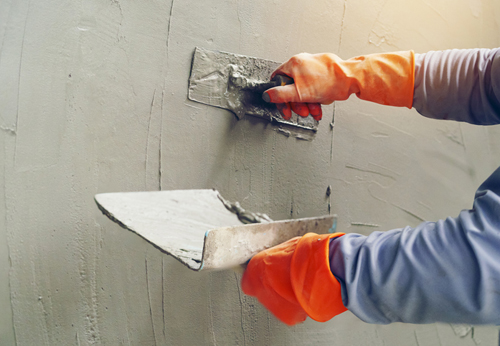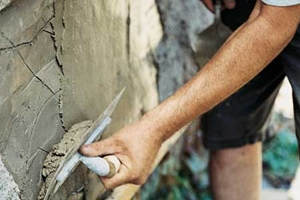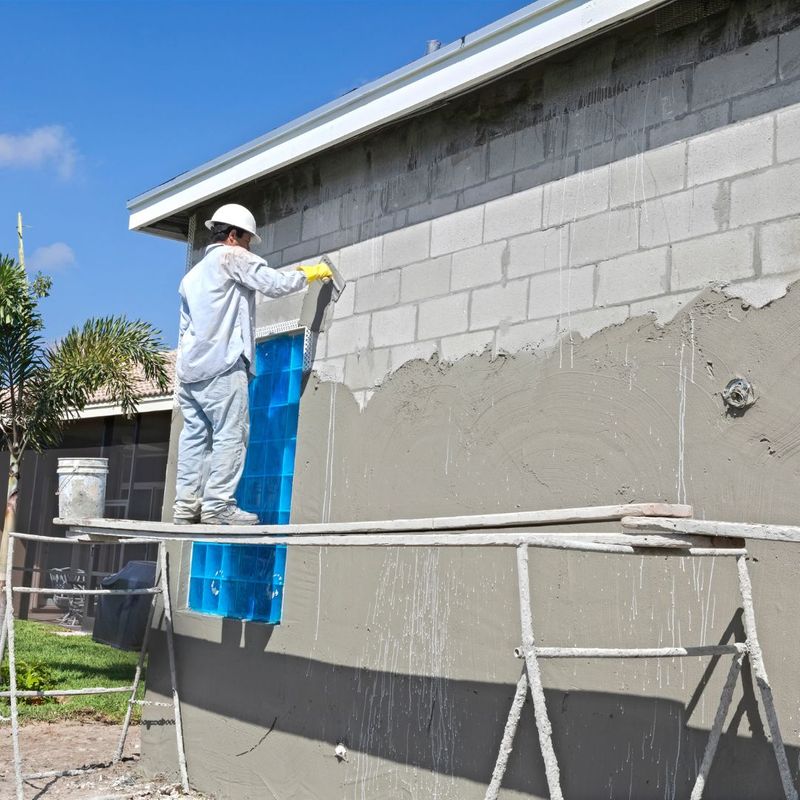How to Locate a Trusted Stucco Contractor for Your Outside Home Transformation
How to Locate a Trusted Stucco Contractor for Your Outside Home Transformation
Blog Article
Checking Out the Adaptability of Stucco in Modern Architecture
Stucco has long been identified for its aesthetic allure and versatility, yet its duty in modern style warrants a better assessment. By discovering its cutting-edge applications, from striking facades to energy-efficient designs, one can appreciate how stucco is redefining the borders of architectural expression.
Historic Value of Stucco
The historical relevance of stucco is extensive, as it has played a crucial duty in building techniques throughout different cultures for centuries. Coming from in old civilizations, stucco was utilized by the Egyptians and Greeks as a long lasting and functional coating for both indoor and outside surface areas. Its adaptability to various environments and capability to simulate extra expensive products made it a popular selection.
In the Roman age, stucco ended up being a main ornamental aspect, made use of extensively in public structures, villas, and temples. The Romans improved the application methods, enabling for elaborate styles and relief sculptures. During the Renaissance, stucco experienced a resurgence, especially in Italy, where it was utilized in decorative information and elaborate exteriors, showcasing the creativity of the period.

Modern Applications in Layout
Stucco has located restored relevance in contemporary style as a result of its adaptability and aesthetic charm (stucco contractor). This typical product is progressively used in contemporary design, connecting the space between modern-day and classic aesthetic appeals. Developers and architects value stucco for its adaptability, enabling it to be used in numerous designs-- from minimalist frameworks to specify Mediterranean designs
In residential jobs, stucco offers a clean, smooth finish that enhances the aesthetic communication of facades. Its capability to adapt different forms and surfaces makes it an optimal choice for both brand-new building and constructions and remodelling projects. Furthermore, stucco's durability and reduced maintenance requirements add to its growing popularity in metropolitan setups, where lasting products are vital.
Industrial applications have actually likewise welcomed stucco, with several companies going with this material to produce welcoming and distinctive store fronts. Making use of stucco in public structures, such as institutions and neighborhood centers, showcases its capacity for producing visually enticing atmospheres while providing exceptional insulation residential or commercial properties.
Color and Structure Developments
Discovering color and appearance technologies in stucco has opened brand-new opportunities for developers and engineers, improving the material's aesthetic effect in contemporary building and construction. Current developments in pigment technology have permitted a bigger range of colors, making it possible for designers to create striking facades that integrate perfectly with their environments or stand apart as bold architectural statements. This flexibility in shade selection supplies designers the ability to evoke details emotional responses and integrate with local appearances.
Structure developments have actually likewise changed stucco applications. Strategies such as shoveling, splashing, and stamping have caused diverse surface coatings, varying from smooth and fine-tuned to responsive and tough. These variants not only add to the building's personality however additionally play a critical duty in light communication, enhancing the visual depth and dimensionality of surface areas.
Additionally, the introduction of artificial stucco options has expanded layout possibilities, offering boosted durability and weather condition resistance while keeping visual appeal. As architects remain to trying out ingenious shade combinations and textured finishes, stucco remains a critical element in modern design, showcasing the dig this material's flexibility and ageless significance in modern layout.
Sustainability and Power Performance
Technologies in color and structure have not only improved the aesthetic allure of stucco but also led the way for better concentrate on sustainability and energy efficiency in contemporary architecture. As ecological issues come to be increasingly prominent, the building and construction industry is transforming its interest to materials that contribute positively to eco-friendly balance.
Stucco, composed mostly of all-natural products such as cement, sand, look at here now and lime, provides a sustainable choice to even more resource-intensive building products. Its durability and toughness minimize the demand for constant substitutes, therefore decreasing waste and source consumption with time. Furthermore, modern stucco formulas typically include energy-efficient additives that improve insulation buildings, decreasing cooling and heating costs for structures.
The reflective top qualities of stucco can likewise be crafted to reduce warmth absorption, adding to cooler interior atmospheres and less reliance on artificial climate control systems. By promoting energy preservation and minimizing the carbon footprint of frameworks, stucco aligns with the principles of sustainable design. As engineers and building contractors embrace cutting-edge methods and environmentally friendly methods, stucco sticks out as a liable and flexible selection in modern layout.

Situation Research Studies of Stucco Projects
The convenience of stucco as a building material is exemplified in numerous effective building tasks that highlight its functional and visual advantages. One notable example is the renovation of the historical Casa de la Guerra in Santa Barbara, California. Using stucco not only preserved the structure's Spanish Colonial Rebirth design however additionally boosted its longevity and weather resistance, making sure long life while maintaining architectural integrity.
Another compelling instance is the modern property project, the Cactus House in Scottsdale, Arizona. stucco contractor. This striking home attributes a smooth stucco finish that balances with the surrounding desert landscape. The stucco's light color shows warmth, adding to power performance, while the textured surfaces add visual interest
In Addition, the Kings Cross redevelopment in London showcases the versatility of stucco in city setups. The application of stucco on modern-day mixed-use structures develops a natural visual that respects historical context while accepting modern layout principles.
These study show exactly how stucco can serve various architectural purposes, from conservation and power effectiveness to aesthetic improvement, making it a helpful site versatile option in modern style.
Verdict
 In verdict, stucco's historical relevance and contemporary adaptability make it a useful material in contemporary architecture. As shown with numerous situation research studies, stucco continues to play a crucial function in shaping the architectural landscape of the contemporary period.
In verdict, stucco's historical relevance and contemporary adaptability make it a useful material in contemporary architecture. As shown with numerous situation research studies, stucco continues to play a crucial function in shaping the architectural landscape of the contemporary period.
In final thought, stucco's historic value and modern versatility make it a useful product in contemporary style.
Report this page